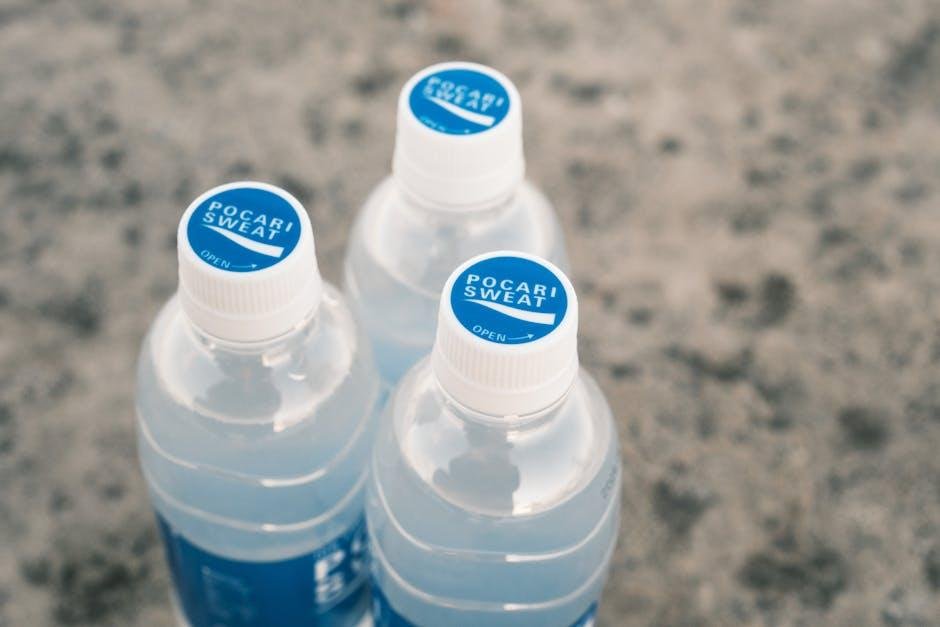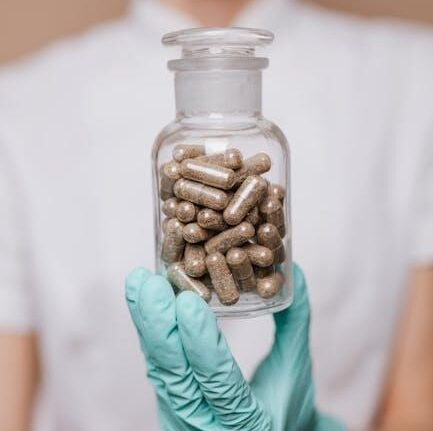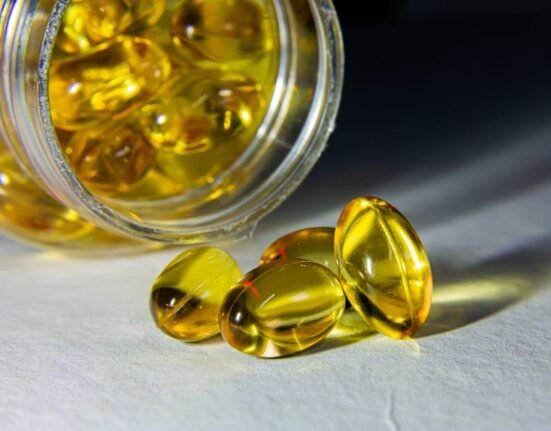In the intricate dance of life’s most essential processes, water often takes center stage. Yet, behind the scenes, a cast of charged particles—electrolytes—quietly orchestrates the balance that keeps our bodies thriving. These tiny ions, from sodium to potassium and calcium, are the unsung heroes in the delicate equilibrium of hydration. Understanding how electrolytes influence hydration balance reveals not just the science of staying quenched, but the art of maintaining vitality at the cellular level. This exploration invites you to dive beneath the surface and uncover the dynamic interplay that powers our wellbeing, sip by sip.
Table of Contents
- Understanding Electrolytes and Their Role in the Body
- The Science Behind Hydration Balance and Its Importance
- Common Electrolyte Imbalances and Their Symptoms
- How Diet Influences Electrolyte Levels and Hydration
- Practical Tips for Maintaining Optimal Electrolyte Balance
- Hydration Strategies for Different Lifestyles and Activities
- Q&A
- In Conclusion

Understanding Electrolytes and Their Role in the Body
Electrolytes are minerals that carry an electric charge and play a crucial role in maintaining the body’s fluid balance and overall function. They include sodium, potassium, calcium, magnesium, chloride, and phosphate. These charged particles help regulate nerve and muscle function, hydrate the body, balance blood acidity and pressure, and help rebuild damaged tissues. Without a proper balance of electrolytes, the body struggles to maintain homeostasis, leading to symptoms like fatigue, muscle weakness, or more serious complications such as heart rhythm disturbances.
The delicate dance between these minerals ensures the smooth operation of cellular processes and overall hydration. For instance, sodium helps control extracellular fluid volume while potassium manages intracellular fluid balance. This coordination is essential because even slight imbalances can disrupt nerve impulses and muscle contractions. Understanding which electrolytes impact different functions can help tailor hydration strategies, especially during intense physical activity or illness:
- Sodium: Regulates water movement and nerve function.
- Potassium: Supports muscle contractions and heartbeat.
- Calcium: Vital for muscle contractions and bone health.
- Magnesium: Assists energy production and relaxation of muscles.

The Science Behind Hydration Balance and Its Importance
At the cellular level, maintaining hydration is a complex dance involving water and charged particles known as electrolytes. These minerals—including sodium, potassium, calcium, and magnesium—create an electrical gradient across cell membranes, which controls the movement of fluids in and out of cells. When this balance is disturbed, it can cause everything from mild fatigue to serious organ dysfunction. The key lies in how these ions regulate osmotic pressure, ensuring that every tissue receives just the right amount of water to maintain optimal physiological function.
Crucial roles of electrolytes in hydration include:
- Regulating nerve and muscle function by facilitating electrical impulses
- Balancing blood acidity and pressure to support cardiovascular health
- Enabling proper nutrient absorption and waste removal at the cellular level
Disruption of this balance, whether through excessive sweating, illness, or dehydration, interrupts homeostasis and can lead to symptoms like dizziness, cramps, or even more severe complications. It’s not just about drinking water—it’s about replenishing these essential electrolytes to sustain the body’s intricate hydration equilibrium.
| Electrolyte | Primary Function | Sources |
|---|---|---|
| Sodium (Na⁺) | Controls fluid balance, nerve signals | Table salt, processed foods |
| Potassium (K⁺) | Muscle contractions, heart function | Bananas, spinach, avocado |
| Calcium (Ca²⁺) | Bone health, muscle function | Milk, leafy greens |
| Magnesium (Mg²⁺) | Enzyme activity, nerve function | Nuts, whole grains |

Common Electrolyte Imbalances and Their Symptoms
Electrolyte imbalances occur when the delicate concentration of minerals like sodium, potassium, calcium, and magnesium in the body shifts from its normal range. These shifts can disrupt vital processes such as nerve signaling, muscle contraction, and hydration levels. Symptoms often manifest subtly at first, such as muscle cramps, fatigue, or dizziness, but can escalate to more severe issues like irregular heartbeats or seizures if left unchecked. Recognizing the signs early can be crucial to restoring balance rapidly and avoiding complications.
Common symptoms linked to electrolyte disturbances include:
- Sodium imbalance: Confusion, headaches, nausea, and seizures.
- Potassium imbalance: Muscle weakness, paralysis, abnormal heart rhythms.
- Calcium imbalance: Numbness, muscle spasms, or brittle bones over time.
- Magnesium imbalance: Tremors, mood changes, and fatigue.
| Electrolyte | Normal Range | Key Symptoms of Imbalance |
|---|---|---|
| Sodium (Na⁺) | 135-145 mEq/L | Dizziness, seizures |
| Potassium (K⁺) | 3.5-5.0 mEq/L | Weakness, cardiac arrhythmia |
| Calcium (Ca²⁺) | 8.5-10.2 mg/dL | Muscle spasms, numbness |
| Magnesium (Mg²⁺) | 1.7-2.2 mg/dL | Tremors, fatigue |

How Diet Influences Electrolyte Levels and Hydration
Diet plays a pivotal role in maintaining the delicate balance of electrolytes within the body, which are essential for proper hydration. Consuming foods rich in minerals like sodium, potassium, calcium, and magnesium directly impacts how effectively your body regulates fluid levels. For example, a diet low in potassium but high in sodium can lead to water retention and increase blood pressure, while insufficient magnesium may contribute to muscle cramps and dehydration symptoms. Incorporating a variety of nutrient-dense foods helps ensure these electrolytes remain in sync, supporting everything from nerve function to cellular hydration.
To optimize your hydration and electrolyte balance, focus on integrating these foods into your daily meals:
- Bananas and avocados (high in potassium)
- Leafy greens like spinach and kale (rich in magnesium and calcium)
- Natural sea salt or Himalayan salt (contains balanced sodium)
- Yogurt and cheese (excellent calcium sources)
A balanced intake of these elements helps your body maintain fluid equilibrium, especially during intense physical activities or hot weather. Understanding which foods to prioritize can turn a simple meal into a powerful tool for sustaining optimal hydration and overall health.
| Electrolyte | Key Food Sources | Hydration Benefit |
|---|---|---|
| Potassium | Bananas, Avocados, Sweet Potatoes | Regulates fluid balance and muscle function |
| Magnesium | Spinach, Nuts, Whole Grains | Supports nerve signaling and prevents cramping |
| Calcium | Yogurt, Cheese, Leafy Greens | Maintains muscle contractions and hydration status |
| Sodium | Sea Salt, Processed Foods (limited) | Controls water retention and blood pressure |

Practical Tips for Maintaining Optimal Electrolyte Balance
Maintaining a healthy electrolyte balance is essential for everything from muscle function to nervous system signaling. To stay on track, consider incorporating a variety of electrolyte-rich foods into your diet such as bananas, spinach, nuts, and dairy products. Hydration is equally important—opt for water infused with a pinch of sea salt or natural electrolyte powders during intense workouts or hot weather. Avoid relying solely on sugary sports drinks, as their high sugar content can sometimes exacerbate dehydration.
Monitoring your daily intake can be simplified with a quick-reference guide. Below is a handy table outlining the average electrolyte content in common foods, helping you diversify your sources without guesswork:
| Food Item | Potassium (mg) | Magnesium (mg) | Sodium (mg) | Calcium (mg) |
|---|---|---|---|---|
| Banana (1 medium) | 422 | 32 | 1 | 6 |
| Spinach (1 cup, cooked) | 839 | 157 | 126 | 245 |
| Almonds (1 oz) | 208 | 80 | 1 | 76 |
| Milk (1 cup) | 366 | 24 | 98 | 300 |
Small lifestyle changes can significantly improve electrolyte balance:
- Stay consistent: Drink fluids regularly throughout the day rather than in large amounts at once.
- Balance intake: Combine electrolyte-rich foods with adequate plain water consumption.
- Adjust for activity: Increase electrolyte intake on days with intense exercise or excessive sweating.

Hydration Strategies for Different Lifestyles and Activities
Maintaining optimal hydration goes beyond simply drinking water; it involves tailoring your fluid and electrolyte intake to suit your specific lifestyle and physical demands. For those with a sedentary routine, sipping on water infused with a pinch of magnesium or potassium throughout the day can sustain natural electrolyte levels without overwhelming your system. Conversely, active individuals—whether hitting the gym, practicing yoga, or running—benefit from beverages that replenish sodium and chloride lost through sweat, often combined with carbohydrates to enhance absorption and energy recovery.
Consider these savvy hydration tips to match your lifestyle:
- Office Dwellers: Keep a reusable bottle at your desk and add natural electrolytes using coconut water or herbal infusions.
- Casual Exercisers: Opt for electrolyte drinks with balanced sodium and potassium post-workout to revive energy stores.
- Endurance Athletes: Employ targeted hydration strategies involving a mix of electrolytes and carbohydrates to maintain stamina and prevent cramping.
- Outdoor Enthusiasts: Prioritize electrolyte replenishment alongside water, especially in hot climates, to avoid dehydration and heat-related stress.
| Activity Level | Key Electrolytes | Hydration Tip |
|---|---|---|
| Sedentary | Magnesium, Potassium | Infused water throughout the day |
| Moderate Exercise | Sodium, Potassium | Electrolyte drinks post-session |
| High-Intensity | Sodium, Potassium, Calcium | Carb-electrolyte solutions during and after |
| Outdoor/Hot Climate | Sodium, Chloride | Frequent electrolyte and water intake |
Q&A
Q&A: Understanding Electrolytes and Hydration Balance
Q1: What exactly are electrolytes?
A1: Electrolytes are minerals dissolved in our body fluids that carry an electric charge. Common examples include sodium, potassium, calcium, magnesium, chloride, and bicarbonate. They play a crucial role in various bodily functions, from muscle contraction to nerve signaling.
Q2: How do electrolytes affect hydration?
A2: Electrolytes help regulate the balance of fluids inside and outside cells. They control the movement of water through cell membranes, ensuring that our bodies stay properly hydrated. Without the right electrolyte balance, cells may either swell up or shrink, negatively impacting health.
Q3: Can you explain the connection between dehydration and electrolyte imbalance?
A3: Dehydration often means losing not just water but also essential electrolytes through sweat, urine, or illness. When electrolytes are depleted or unevenly distributed, the body struggles to maintain fluid balance, leading to symptoms like muscle cramps, dizziness, or even more severe complications.
Q4: How do we restore electrolyte balance after intense exercise or illness?
A4: Replenishing electrolytes usually involves drinking fluids that contain key minerals, such as sports drinks, oral rehydration solutions, or natural options like coconut water. In some cases, dietary intake of fruits, vegetables, nuts, and dairy can help restore electrolyte levels gradually.
Q5: Are all electrolytes equally important?
A5: Each electrolyte has a unique role, and balance among them is what truly matters. For example, sodium helps retain water and maintain blood pressure, potassium supports muscle function and heart rhythm, while calcium is vital for bone health and nerve communication. Too much or too little of any one can disrupt overall balance.
Q6: Can too many electrolytes be harmful?
A6: Yes. Excess electrolytes—for instance, too much sodium—can cause high blood pressure or kidney strain. Similarly, hyperkalemia (excess potassium) can lead to heart rhythm problems. Maintaining appropriate levels through balanced diet and hydration is key.
Q7: How can someone monitor their electrolyte levels?
A7: Clinical tests can measure electrolyte concentrations in blood or urine. For most people, symptoms like unusual fatigue, cramps, or irregular heartbeat may signal imbalance. Keeping hydrated with a balanced diet and paying attention to bodily signals is a practical approach for everyday health.
Q8: What lifestyle habits support healthy electrolyte and hydration balance?
A8: Staying hydrated by drinking water regularly, eating a variety of mineral-rich foods, avoiding excessive alcohol or caffeine, and managing exercise intensity and duration are all fundamental. Listening to your body’s thirst cues and adjusting accordingly can make all the difference.
This Q&A captures the essentials of electrolytes and their instrumental role in maintaining hydration balance, framed in a clear yet thoughtful manner.
In Conclusion
In the intricate dance of fluids and minerals that keep our bodies humming, electrolytes play the starring role—quietly balancing the delicate scales of hydration. Understanding their pivotal function helps us appreciate that staying hydrated isn’t just about water intake; it’s about maintaining harmony within. As our lifestyles push us to new limits, remembering the subtle chemistry at work beneath the surface can empower us to nourish ourselves with intention, ensuring that every sip supports the vital ebb and flow of life itself.















Leave feedback about this